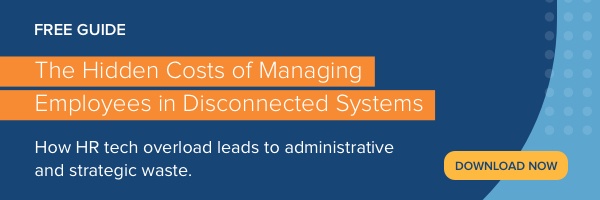
Errors and delays in payroll can be frustrating for everyone—payroll staff, HR, and the impacted employees. The problem can often be traced back to an inefficient, manual process or a payroll platform that doesn’t fully meet your needs for accuracy or integration. The good news: There are steps you can take to fix a broken payroll management system and keep your payroll processes humming.
Common Payroll Management System Limitations
A payroll system is only as good as its ability to fit with your internal processes and help you meet your goals for consistent, error-free pay. Without an optimal fit, it can feel like your payroll system is working against you, rather than helping you deliver accurate pay on time.
The tell-tale signs of a broken payroll management system are hard to miss. You may need a payroll system upgrade if you’re experiencing any of the following complications:
1. Difficult to Manage Payroll for Multiple Employee Classifications
Most payroll systems can classify employees as exempt or non-exempt according to the Fair Labor Standards Act (FLSA). But without a flexible and customizable payroll system, you can run into other classification problems.
Your payroll system could be limiting your ability to pay individuals in other categories, for example, contractors, interns, part-time, or seasonal staff. Those individuals need to be classified differently when it comes to scheduling their hours and their eligibility for time off, overtime, and benefits. If your payroll system lacks the flexibility to classify individuals by a range of employment types, you can end up underpaying, overpaying, or running into serious compliance obstacles with the Department of Labor or the IRS.
2. Payroll Isn’t Compatible with HR Systems
When you have one system for managing payroll, but it doesn’t speak to your systems for managing other aspects of your workforce, you can have discrepancies in pay, benefits deductions, and withholdings. Those discrepancies can leave you spending precious time researching and fixing errors or creating workarounds to merge data from two or more systems. Using separate, disconnected systems also makes it difficult to achieve consistent reporting and an accurate tally of working hours and pay.
3. Too Many Manual Workarounds
A payroll system may automate some aspects of payroll management, but leave it to you to handle manual tasks, such as comparing payroll deductions with benefits elections. If your payroll system only handles the basics for each pay period, you’re probably still doing too much work behind the scenes to ensure accurate paychecks. Manual workflows not only waste time, but they also create more opportunity for human error.
4. Limited Reporting Capability
Your payroll system should do more than run bi-weekly payroll and generate W-2s. It should also provide you with data and reporting to improve workforce decision-making. If your payroll system’s reporting capability is limited to canned reports, such as a summary of deductions or your total payroll expense, you’re missing out. A fully integrated payroll system can open the door to detailed reports, including headcount, paid leaves, overtime trends, and more.
5. No Reminders or Tools to Maintain Regulatory Compliance
Without reminders or alerts for upcoming payroll action items, it can be easy to miss a deadline or a critical step in the payroll process. Your payroll system should provide notifications and tools to help you build a compliant payroll program and stay on top of deadlines and filing requirements.
6. Hard for Employees to Access Basic Payroll Information
A payroll system that doesn’t offer self-service capability leaves employees in the dark about how their pay is calculated, as well as their deductions for benefits and taxes. It also makes employees over-reliant on HR or the payroll department to get documents such as pay stubs, W-4s, and other forms.
How to Fix Your Payroll System and Streamline Your Process
It is possible to overcome the limitations of your current payroll system and realize a more efficient and compliant payroll process. According to a payroll benchmarking survey by Deloitte, in partnership with the American Payroll Association (APA) and Global Payroll Management Institute (GPMI), respondents from more than 750 organizations said the biggest areas for improvement in payroll operations were in compliance, accuracy, reporting capabilities, and technology. Here are some actions you can take to improve your payroll management system in those core areas:
1. Conduct a Review of Your Existing Payroll Process
Reviewing your payroll program can help you identify errors and prioritize areas for improvement. By taking a holistic approach and conducting an audit of your payroll process and systems, you can:
- Identify new ways to maintain accuracy and compliance in payroll operations.
- Uncover inefficiencies in your process.
- Strengthen your financial controls.
2. Integrate Payroll with HR Functions for a Total Workforce Management Approach
An integrated payroll system allows you to keep your payroll activities aligned to your activities for time and attendance, scheduling, benefits administration, and more. By integrating those systems, you can avoid double-entry, have one system of record for your workforce data, and achieve more consistent reporting.
3. Stay Abreast of Key Labor Laws and Payroll Filing Requirements
Managing payroll effectively requires keeping up to date with compliance requirements and payroll filing deadlines. By understanding your obligations and using a payroll system with built-in reminders and alerts, you can avoid costly payroll errors and work key deadlines into your existing processes. A great step in the right direction is to keep a running checklist of key payroll dates and deadlines.
Your organization isn’t destined to continue working with a payroll system that wastes time and contributes to costly errors. A cloud-based, integrated payroll system provides the tools you need to pay employees accurately, while also giving you access to reporting and dashboards to improve workforce decision-making. For more tips to improve your payroll management capability, read the e-book, The Hidden Costs of Managing Employees in Disconnected Systems.

